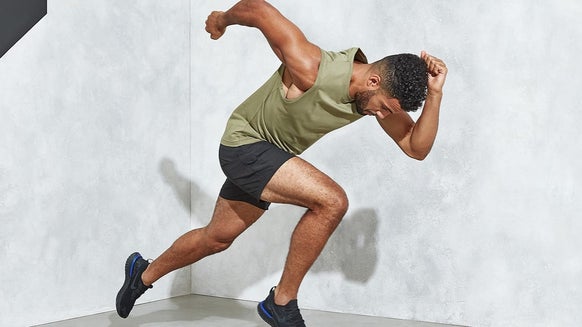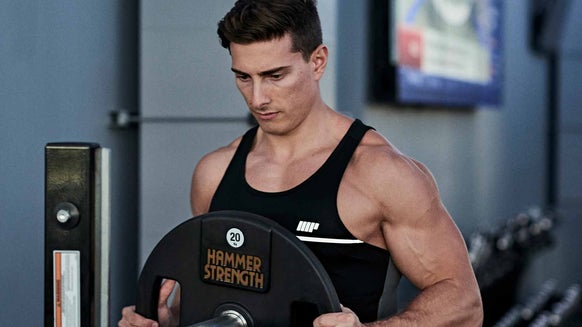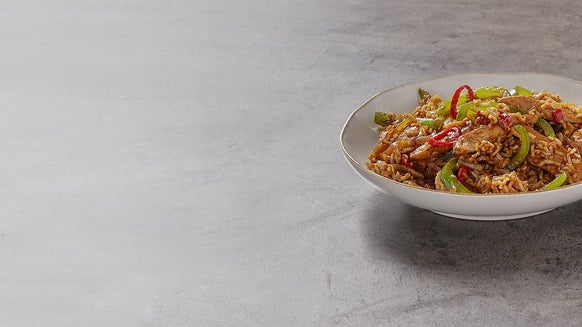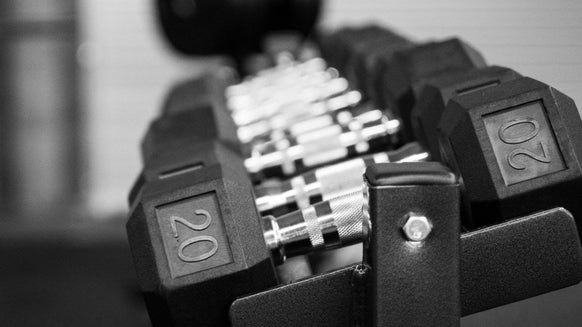Time Under Tension (TUT) | How To Use Negative Reps To Build Muscle

Every time your muscles contract, they do so “under tension”. This tension causes mechanical and metabolic stress in the muscles.
There’s a type of training, known as “time under tension”, that utilises this tension to overload your muscles and boost growth. Here’s everything you need to know about it.
What is Time Under Tension Training?
Time under tension (TUT) training focuses on prolonging the length of time during which the muscles are challenged. This is crucial for muscle growth as it puts the muscles under more stress than completing reps as normal.
TUT is used to measure how long your muscles are under this stress. For example, if a set lasts 30 seconds, the TUT is also 30 seconds. In traditional sets, there are often pauses and biomechanical changes that affect the tension, such as slowing down at the top of a squat after an initial explosive movement.
Think about the tempo of your movements. If you’re using a 3-1-1 tempo (3 seconds for the negative/eccentric part, 1 second pause, and 1 second for the positive/concentric part), then the total time under tension for 1 rep is 5 seconds. You can use this to calculate the total TUT for each set.
How Long Should a Time Under Tension Set Be?
In a TUT set, there are two ways to overload the muscles — by increasing the weight or by increasing the time.
Increasing the weight can lead to strength gains with fewer total reps and a focus on controlling the eccentric movement when the muscles lengthen under tension.
If you’re keeping the same number of reps and sets, increase the total number of seconds during the contraction phase to improve the mind-muscle connection and to fatigue the muscles. Aim for between 40 and 80 seconds (hypertrophy sets normally last 20-30 seconds) but make sure to use a weight heavy enough to induce mechanical stress.
What’s the Best Rep Range for Building Muscle?
For muscle growth, the ideal rep range is still 8-12 reps, but the slower movement extends the time per rep.
If you’re increasing the weight, try 4-6 reps with a 6-second negative phase. This approach should help create microtears in your muscle fibres that lead to increased muscle growth after repair.
The next step is progressive overload through increased time or heavier weights. Creatine can be really useful for this, helping with heavier lifting and quicker recovery.
What Is a Negative Rep?
A negative rep occurs during the eccentric phase of a rep when the muscles contract while lengthening, like during the downward movement of a squat. The opposite movement is the concentric phase.
Eccentric vs Concentric Training
Both eccentric and concentric training can contribute to muscle growth and strength gains, but through slightly different mechanisms. Eccentric training can cause more muscle damage (and therefore growth) due to the forced lengthening of the muscle fibres, whereas concentric movements are usually preferred for strength and power.

What Are the Benefits of Time Under Tension Training?
1. Muscle Growth
TUT can enhance the metabolic response to muscle damage, leading to greater muscle growth. The more TUT you put your muscles under, the greater the response will be.
2. Fat Burning
Longer TUT creates more microtears in muscle tissue. This means the body will burn more calories while it repairs itself in the days following a workout.
3. Endurance
TUT puts the muscles through prolonged stress. This should lead to an improved ability to handle fatigue, allowing you to lift for even longer periods.

Tips for Utilising Time Under Tension
Implementing TUT into your workout can be a challenge at first, so use these tips to help make it easier.
1. Avoid Locking Out
When you completely lock out your muscles, you transfer the stress from your muscles on to your joints. So aim to extend your joints to almost straight but never fully.
2. Concentrate on the Eccentric Phase
Focus on extending the eccentric part of the movement rather than the concentric, as this will create more microtears and promote hypertrophy.
3. Keep a Tempo
Find a tempo and stick to it. This will ensure you’re getting the right TUT and also help you focus on the movement. A tempo of 4-1-2 is a good place to start.
4. Use Drop Sets and Supersets
Including drop sets and supersets is a great way to increase TUT and the volume of your workouts, especially if you’re short on time.
5. Keep it Intense
Keep rest periods between sets short (1-2 minutes for hypertrophy) to ensure your workout is intense and you’re putting your muscles under enough stress.
6. Focus on Form
Form should always be a main focus, but it’s particularly important if you want to maximise TUT. By maintaining proper form, you can target the working muscles and make your workout more efficient.
7. Lift Longer
Add a few seconds to your lifts every week to gradually increase TUT over time and strength and muscle gains.
8. Recovery
Recovery is always important, but especially when you’re putting your muscles under so much stress. Consume plenty of high-quality protein and fast-acting carbs to maximise recovery and keep your energy levels high.
Take Home Message
TUT is a great, versatile tool for so many fitness goals. If you’ve hit a bit of a plateau or looking to start making some significant progress, try incorporating it into your workouts and see if it helps.
Remember to always prioritise proper form and recovery, and to seek some professional guidance from a qualified PT if you have any more questions.








